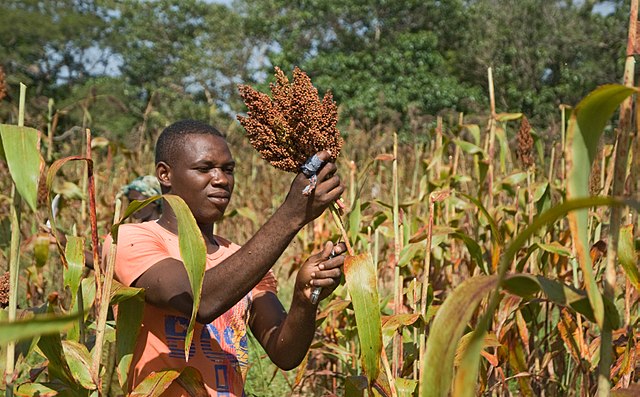Throughout the 21st century, agricultural production growth in Africa will rely on significant productivity gains. Plant biotechnology, which speeds up the selection process to obtain plant varieties with desired traits more quickly, will be crucial in achieving this.
PART 1
IMPOSSIBILITY TO ACHIEVE GROWTH GOALS WITHOUT PLANT BIOTECHNOLOGY
The growth of African agricultural production, necessary to improve the continent’s food self-sufficiency rate, will depend on more productive local crops.
According to the OECD (Organization for Economic Cooperation and Development), root crop production will reach 4.85 million tonnes by 2031, which is 900,000 tonnes more than in 2019-2021.
The planted varieties will need to be able to adapt to climate change and its extremes. Cereal and legume production will also increase by 20% during this period, thanks to high productivity gains of nearly 2% per year. As the African population is expected to double by 2050, productivity gains will need to continue each year.
Without the use of plant biotechnology, the growth targets for these crops are unattainable.
“The plant biotechnologies currently used are part of a range of selection tools developed through innovation, technological advancements, and scientific knowledge,” explains Georges Freyssinet, President of the French Association of Plant Biotechnologies (AFBV). “They are complementary and are all used with the idea of creating new plant varieties adapted to climate, resistant to pathogens and pests, more productive, and less dependent on inputs.”

Georges Freyssinet, President of the French Association of Plant Biotechnology
Plant Biotechnologies in Plant Breeding
Plant biotechnologies employed in plant breeding can be classified based on the three operational modes identified in the selection process.
- Increasing genetic variability
In addition to intraspecies crosses, biotechnologies offer three possible approaches:
- Natural or induced mutagenesis
- Transgenesis, which allows the introduction of new genes or traits into the plant
- Targeted genome editing or targeted mutagenesis, which modifies an existing gene to confer a new trait.
- Speeding up the transfer of desired traits
In this category, techniques such as in vitro culture, micropropagation, or haplodiploidization can be mentioned.- In vitro culture and micropropagation accelerate vegetative cycles without going through the flowering and seed stages.
– Micropropagation allows easy multiplication of identical hybrid plants and is also a convenient multiplication method for plants with low offspring.
– Haploidization is a method used to quickly stabilize genetic material during selection. It involves obtaining haploid plants (n) from male or female organs, followed by doubling the chromosomal stock (2n). By haploidiploidization, the mutated or introduced gene is then doubled in one generation, thus stabilizing it without the need for backcrossing. Previously, stabilizing genomes of plants with new traits required six to eight successive crosses (or backcrossing).
- Identifying the plant of interest
Various techniques are used to isolate plants that exhibit desired traits once the cross has been made.- Molecular markers identify these traits among the plant’s genome. By using molecular markers, the trait can be tracked throughout the offspring. If molecular markers are combined with backcrossing, the desired plant can be obtained in 2 to 3 generations instead of 6 to 8.
– High-throughput phenotyping involves cultivating test plants in numerous trial plots to identify the most interesting ones in terms of development. With the precise measurement tools available today, the size of trial plots can be reduced and their number multiplied.
– In vitro resistance tests of plant parts to target molecules (e.g., fungal toxins), complemented by field cultivation, are also part of the range of technologies used to identify plants of interest.

Panoramic view of a field of cassava, maize, and millet (@ Nieuwenkampr)
Acceleration of Plant Breeding
Except for transgenesis, all the presented biotechnologies only accelerate the selection process to obtain plant varieties with desired traits more quickly. They only exploit the existing genetic heritage of plants in nature.
The authorized and employed plant biotechnologies do not introduce exogenous genes. Moreover, they are used without controversy.
These plant biotechnologies differ in this aspect from genetically modified organisms (GMOs). In the late 20th century, GMOs represented a technological leap as they aimed to expand the genetic variability of cultivated plants by introducing new traits through genes from other species.
Since the beginning of the 21st century, genome editing technologies have opened new possibilities to accelerate the selection process. Will they be more welcomed than transgenic technologies?




